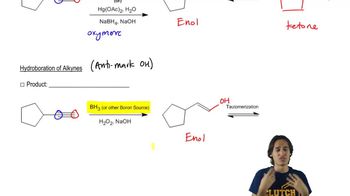Show how hex-1-yne might be converted to
e. 2-bromohexane.

 Verified step by step guidance
Verified step by step guidance Verified video answer for a similar problem:
Verified video answer for a similar problem:



 4:07m
4:07mMaster General properties of hydrohalogenation. with a bite sized video explanation from Johnny
Start learning